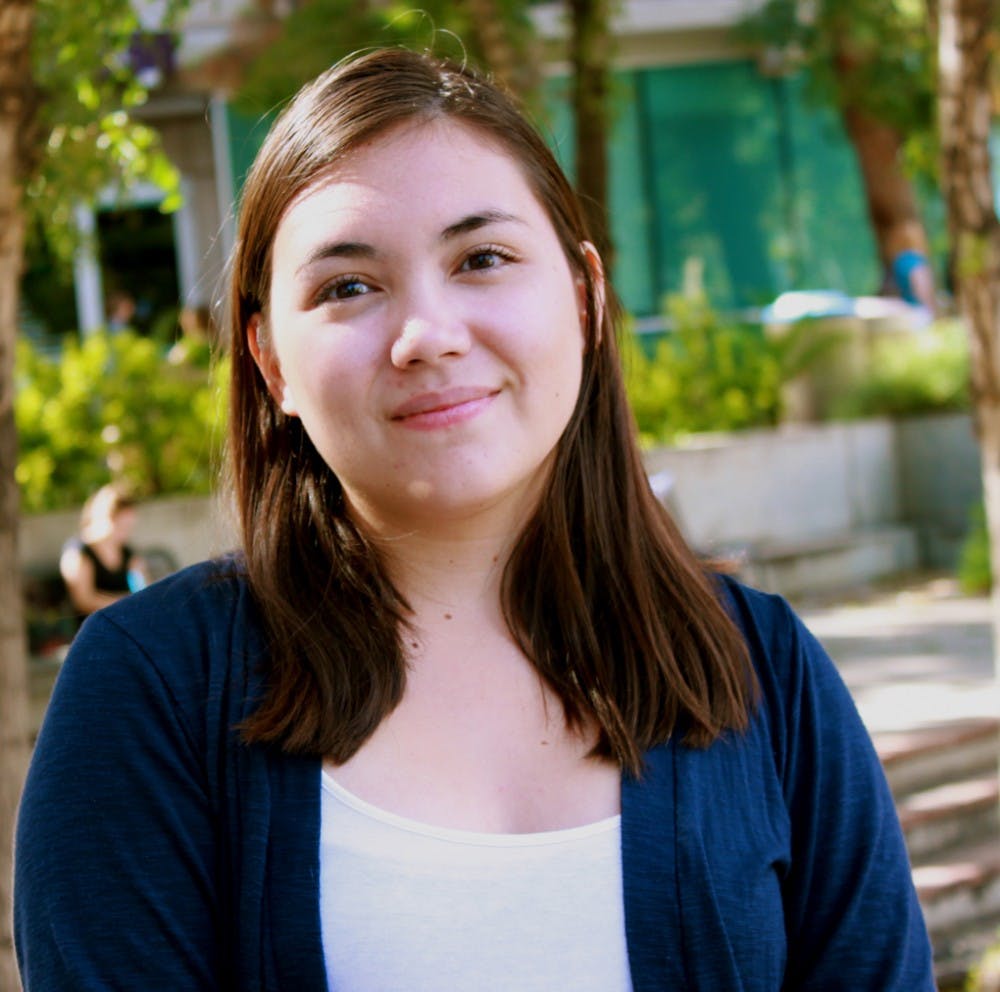Imagine: a digital space devoted to helping undergrads from all disciplines make art together, in a space that’s half social networking site, half Google Docs.
By January, it will no longer require an act of imagination for Arizona State University students to have such an experience.
Merj started as the thesis project by creative writing senior Heidi Nielson. She understands the concept can be confusing at first, but she explains that merj is a literary journal that publishes collaborative art, as well as an online platform to make collaborative projects with others.
She wants it to be both an e-zine and workspace, she says, “And that’s sort of the challenge of merj.”
Nielson, 22, wanted to do something different from other creative writing majors with her thesis project. So, she found a way to combine her interest in multidisciplinary art (she also plays four instruments) with her interest and experience in publishing (she’s done internships with two ASU-affiliated literary magazines, the "Superstition Review" and "Hayden’s Ferry Review").
To help with the workload and technical know-how, Nielson enlisted computer science major Chris Johnson to design the website. Since then, merj has grown from dual thesis project into a long-term collaborative project.
Besides the straightforward literary journal on the home page, merj.org will also have a login option to access its collaborative workspace. From here, users can propose projects and search for like-minded artists to work with; then, everyone can access their project’s collaborative space, which will resemble a computer’s desktop in format and function. The design is still open to suggestions, but should include features like uploading visual and audio files, rearranging parts of projects, and a chat feature so collaborators can communicate in real time.
Given its unique mission, merj will have its own set of opportunities and challenges, says Patricia Colleen Murphy, an English professor at the Polytechnic campus and managing editor of the "Superstition Review."
Merj’s advantage is that it has cornered a market, “because people who do collaborative work don’t have a lot of avenues with which to publish that work,” Murphy says. But it also faces unique difficulties — given the time-intensive nature of collaborative projects, merj will receive many less submissions than most literary journals.
It helps that Nielson already “has a lot of knowledge about literary publication,” Murphy says, but “[merj’s] longevity probably depends on how willing Chris and Heidi are to continue to do the massive amount of work it takes to run a literary magazine.”
Nielson originally wanted to travel for at least a year after graduation, but says running merj may change her future plans. She definitely wants to keep running the project from Phoenix after graduating this spring; Nielson and Johnson hope to expand the project nationally later on.
Cynthia Hogue, a professor and the Maxine and Jonathan Marshall Chair in Modern and Contemporary Poetry at ASU, says the most innovative part of the project is its online, digital collaborative space — a tool she says will cut down on lag time and make communication more effective.
The most difficult task for Nielson and Johnson won’t be realizing their vision, but getting students engaged with it, Hogue says, but being undergrad oriented and student generated will be a strength for merj.
“This isn’t faculty reaching out and saying, ‘Hey, isn’t this a good idea?’” she says. “This is coming from an undergraduate thesis project, reaching out to other undergraduate artists.”
Hogue’s advice to students considering merj is “to just go for it,” because it’s a rare chance for artistic growth that students may not encounter again after graduation.
“You have an opportunity to experiment, to brainstorm, to engage creatively with a partner, to create something that you wouldn’t have done alone,” Hogue says.
The submissions process is already in full swing at merj.org — the next deadline for its first contest (an all-disciplines response piece) and first issue is Jan. 2011. The website should be launched by January as well, and issue one is slated to publish online next March.
Conact the reporter at trabens@asu.edu.







